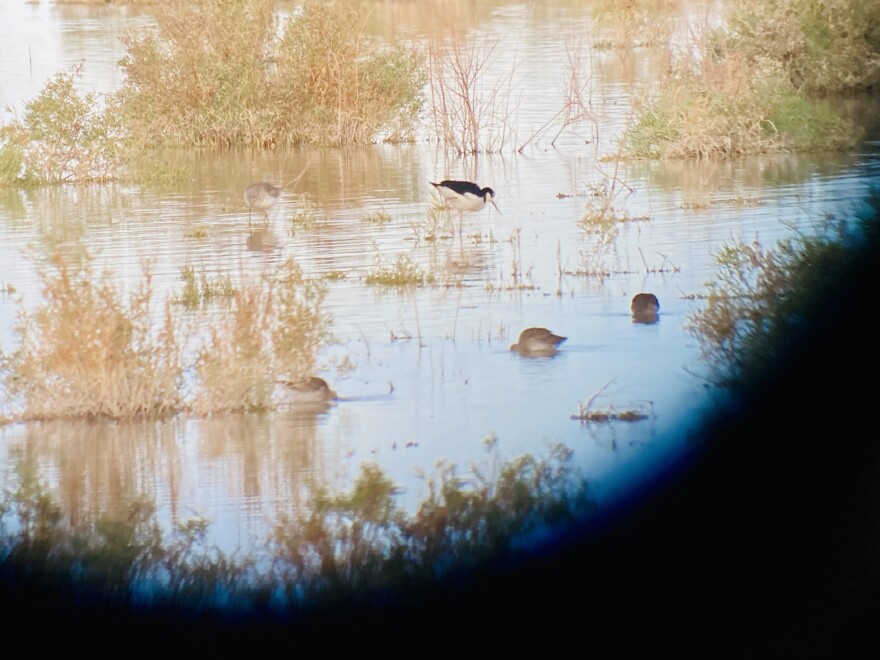With our free press under threat and federal funding for public media gone, your support matters more than ever. Help keep the LAist newsroom strong, become a monthly member or increase your support today.
Amid ecological decline at Salton Sea, Audubon California finds 15% increase in shore birds

A new study by Audubon California has found a 15% increase in the number of shore birds at the Salton Sea, despite a prolonged ecological decline there.
The findings are surprising because in recent years as the area has gotten drier, there have been fish die-offs and fewer of the larger, fish-eating birds, like pelicans.

The study suggests the changes in the area’s ecology has specifically attracted more shore birds like the Western sandpiper.
“We’re seeing an increase in the availability in shore bird habitat,” said Dan Orr, leader of desert and Salton Sea science for Audubon California.
The birds have migrated from other parts of the region where development has shrunk their habitat, usually in mudflats along the coastal shores.

The study collects seven years of data and could point to ways to improve the public’s experience at the Salton Sea.
It’s the mud
As the water line drops, Orr said, these smaller shore birds are finding nutrient rich biofilm on the surface of the water and mud. It’s produced when freshwater from farm runoffs meets the very salty water in the Salton Sea. The biofilm is rich in bacteria and lipids.
“It’s like their green smoothie,” Orr said.
But more information is needed about what the shore birds are eating and how the food source that’s bringing them to the Salton Sea is related to the food chain in the area.
“Globally and in the U.S., shore birds are doing badly,” Orr said.
More birds, more birdwatching
The increase in birds is good news for wildlife watchers. There are specific spaces reserved for the public, like the Sonny Bono National Wildlife Refuge and the Salton Sea State Recreation Area.
But advocates say an image problem means Salton Sea is not on the top of many people’s lists.
“A lot of people think that it's a wasteland,” said Lesley Handa, the lead ornithologist at San Diego Bird Alliance. The group helps conduct a bird count at the Salton Sea every December.
There’s some truth to the wasteland perception. Public officials have tried to address wildlife die-offs and harmful air borne dust stirred up from the Salton Sea.

Nevertheless, Handa said the report’s findings constitutes good news.
“[The Salton Sea] is a really, really valuable area in terms of water bird biodiversity and bird biodiversity in general,” she said.
If you go
Advocates say there should be more signage, platforms and viewing areas for the public to fully enjoy the bird watching experience. Handa recommends first time visitors to the area start at the Sonny Bono National Wildlife Refuge. There’s a visitor center that provides maps.








